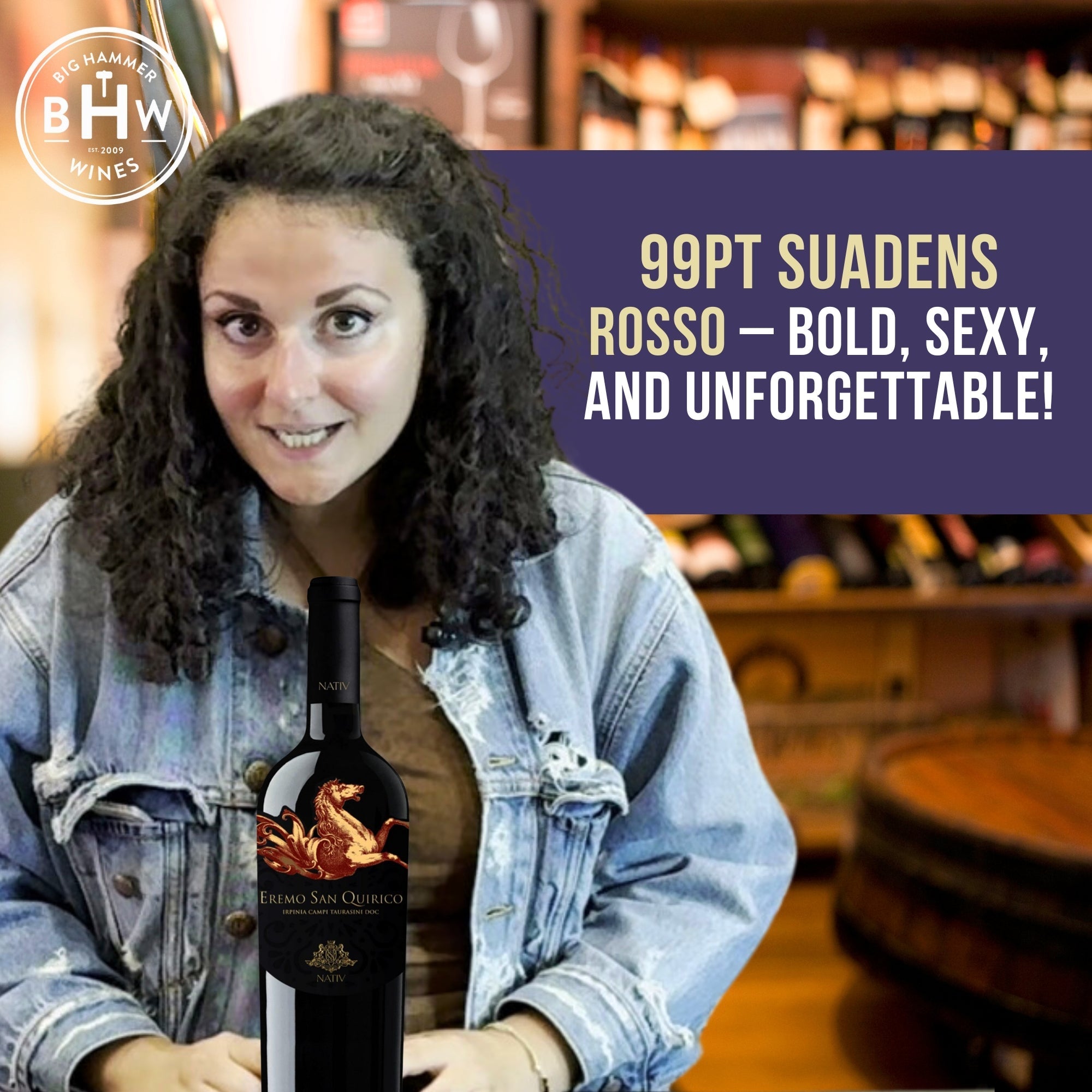Drink Better Wine - Demand More Transparency
Are you on a Keto diet and want to know if your wine has added sugar? Do you want to reduce your exposure to sulfites? Are you concerned about added chemicals in your wine? Many consumers today are searching for wines that are low in sugar, sulfites and other chemicals.
At Big Hammer Wines, we are concerned about the increasing manipulation of wine and lack of transparency about what has been added. Because we want you to drink better wine, our fine wine experts share insider secrets of the wine industry. We believe that ingredients labeling for wine is needed.

A Short History of Nutrition Labeling in the U.S.
U.S. regulators require packaged foods and nonalcoholic beverages to have a nutrition facts label. Alcoholic beverages have no similar requirement.
The 1990 the Food and Drug Administration (FDA) through the Nutrition Labeling and Education Act (NLEA) mandated a government-approved label for most food products. The label required a list of ingredients by weight from highest to lowest and other nutrition information.
In 2014, the FDA proposed label changes due to public confusion over the details and increasing obesity concerns. A new label was approved on May 20, 2016.
See a side-by-side comparison of the labels here.

What About Alcohol, and Wine in Particular?
Alcohol is regulated differently from other foods and beverages. The Alcohol and Tobacco Tax and Trade Bureau (TTB), not the FDA, regulates alcohol. The TTB does not require nutritional labeling. The TTB assumes consumers understand what ingredients are in these mostly agricultural products.
The label requirements include the percentage of alcohol content by volume, a health warning and a sulfite declaration (this last only for wine sold across state lines.)
For wine, the following are optional but regulated:
- grape variety and appellation of origin
- wine designation (white/red/rose/table)
- viticultural area (AVA)
- estate bottled
- vintage date
- the term "organic" (regulated by USDA)
On November 26, 2019, the TTB announced a review period for labeling regulations for alcoholic beverages. The goal is to:
- Offer more flexibility for grape variety disclosures related to wine blends
- List information about every grape variety in the wine in descending order
Disclosure of allergy risk is not required but is under review with an interim rule for optional labeling released on July 26, 2006.

Issues for Consumers
In general, the wine industry and most consumers do not believe ingredient labeling is necessary. Consumers believe they know the ingredients in wine: grapes, yeast, sugar and alcohol.
But because both alcohol and sugar pose significant health risks for consumers, these should be disclosed. While consumers may be more aware of chemical additives in our modern food production system, they are not aware of the same for alcoholic beverages.
Winemakers can legally include over 60 additives and agents. Examples of fining agents include egg whites or isinglass. Additives include gum Arabic, sweeteners and enhancers for aromas, color and oak.
However, a growing number of winemakers and consumers want transparency in ingredient labeling. Some winemakers voluntarily list ingredients on their labels and some consumers actively seek out these brands.
For example, younger consumers are more concerned with the health impacts of drinking alcohol and of added sugar. They want low alcohol, low sugar or “natural” wines. The lack of ingredients labeling makes it almost impossible for them to find the wine they want.

Potential Wine Labeling
Consumers should know what is in all products they buy. They don’t understand the difference between industrial wines and those that are less processed. They don’t understand such terms as biodynamic or organic. Labeling can help.
For companies, ingredient transparency can be a point of differentiation in the marketplace. Many companies, including a few in the wine industry, use this to their advantage.
The TTB needs to work across all aspects of the wine industry to develop labels that increase transparency for consumers.
Guidelines for wine might include:
- Serving size information – the current government guidelines state one (5 ounce) drink per day for women and two for men
- Calorie information – the guidelines say that daily calorie intake should include calories from alcohol
- Amount of total sugar and added sugar in the wine
- Listing ingredients and additives above a certain level
- Replace the “contains sulfites” disclosure with the amount of sulfites
Definition and standardization are needed because different alcohol and sweetness levels impact the serving size and calorie count.
However, smaller wineries will be significantly impacted by the additional costs for such labeling, so the TTB should take this into account.

The BHW Real Wine Club Provides Transparency in Wine
At Big Hammer Wine, we value transparency and educating consumers about wine.
We use our strict guidelines to choose pure wines of quality and value. Our BHW Real Wine Club provides wine drinkers transparency. We care about what you drink!
Our wines are:
- lab tested to guarantee quality
- not adulterated with dies, coloring agents, unnatural chemical agents
- lower in alcohol (<14%)
- lower in sugar (< 2 g/L)
- selected from small producers, often with limited availability
- low in sulfites (<75ppm)
The BHW Real Wine Club is flexible, includes free shipping and you can cancel any time. Learn more about wine from the BHW Real Wine Club.
Big Hammer Wines
The wine experts at Big Hammer Wines taste thousands of wines every year from around the globe, looking for quality and value. This special offer reflects the passion we have for our clients.
Discover the world through its wines, ClickHere! Visit Bighammerwines.com and become a wine expert!

























































Compartir:
BHW Real Wine Club Insider Secrets: Residual Sugar
Wine Consumers Cheer Easy Online Search for Perfect Wine
Comments Section